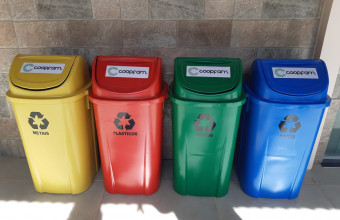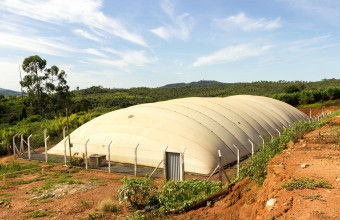Pig manure, carcasses, sludge, oil residues. All this “garbage” is helping to generate clean and renewable energy for the five largest agricultural cooperatives in the state of Paraná. An initiative led by the Organization of the Cooperatives of the State of Paraná (Ocepar), which decided to invest in the training and education of employees and members to encourage the transformation of environmental liabilities into assets, such as energy and biofertilizers.
Ocepar offered the cooperative members and employees a post-graduate course in renewable energy with an emphasis on biogas. R$535,000 were invested – R$347,700 from the National Cooperative Learning Service (Sescoop) and R$187,000 from the cooperatives. The initiative started in 2011, and was developed in collaboration with Itaipu Binacional, Isae-FGV, and the National OCB System.
The 23 trained students served as knowledge multipliers, transferring to their cooperatives everything they had learned in the classroom. The result? All these organizations have developed and executed their own projects to generate clean and renewable energy from the biodigestion of their production waste.
INNOVATION
The biodigestion energy generation projects of the cooperatives in Paraná bring at least three direct benefits to these organizations and to the environment:
- They are recycling possible “environmental liabilities”, such as methane gas emissions, into clean energy and biofertilizers.
- In doing so, they prevent the emission of gases that cause global warming.
- By generating clean, renewable energy, the cooperatives gain energy self-sufficiency.
- This has not only reduced energy consumption expenses, but also ensured a higher quality and more stable energy supply, especially in more remote areas.
- After the start of operations of the energy generation projects, the cooperatives obtained gains in productivity and reduction of animal losses, which occurred due to the constant lack of energy from the utility company. Want more?
- The benefited cooperatives and Ocepar have come together to form Ocepar’s Energy Forum, which promotes the constant debate on issues, proposing actions and solutions that bring sustainability to the different production processes in the cooperatives.
Good for the cooperatives, even better for the planet.
Quer mais? As cooperativas beneficiadas e a Ocepar se uniram para formar o Fórum de Energia da Ocepar, que propicia o debate constante sobre temas, propondo ações e soluções que tragam sustentabilidade aos diferentes processos produtivos nas cooperativas. Bom para o cooperativismo, melhor ainda para o planeta.





